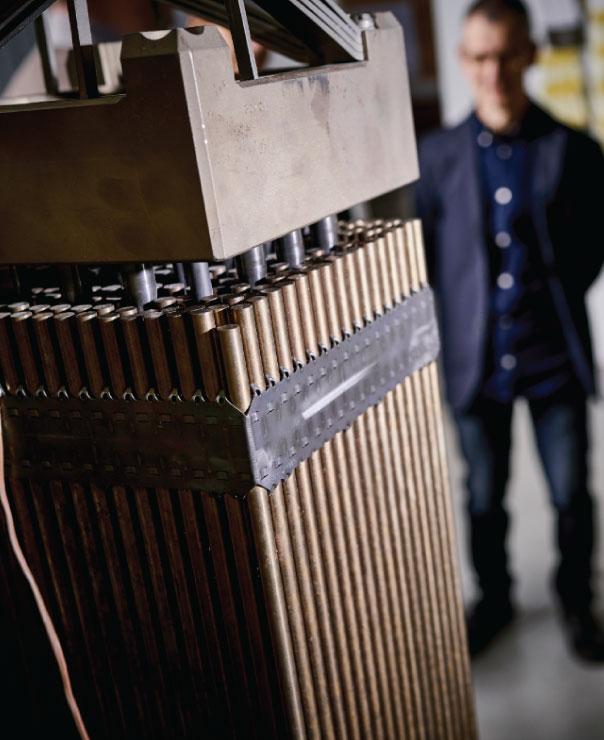Recycling spent nuclear fuel
Recycling spent nuclear fuel from our current power plants will help to ensure the more sustainable use of nuclear energy in the future. It could provide an answer to the issues that exist today and bring about savings in the consumption of raw materials.

Recycling?
After 12 to 18 months, nuclear fuel is removed from the reactor core. By that stage, the balance between fissile atoms and non-fissile atoms is too severely affected, but the fuel still contains a larger quantity of usable and valuable material.
So much in fact that we can recycle up to 96% of spent fuel: 1% plutonium and 95% uranium. The remaining 4% is made up of fission products and ‘minor actinides’. These are the non-recyclable waste substances. They are sorted by category and conditioned for final disposal.
💡 Want to know more about 'waste and disposal?' Read more
MOX as nuclear fuel
The SMR-LFR will use MOX (mixed oxide) as its fuel. Mixed oxide consists of oxide of uranium and plutonium. The uranium can be recycled uranium from spent nuclear fuel, or depleted uranium, a by-product of the enrichment industry.
The second component of MOX, plutonium, occurs naturally in nuclear reactors when a neutron is incorporated into the nucleus of a U-238 atom. The plutonium for mixed oxide is recovered from spent fuel assemblies and can therefore reused in a positive way.
Due to the fact that it operates with fast neutrons, an SMR-LFR has the potential to operate in a closed fuel cycle and therefore use MOX as a nuclear fuel. This could be MOX made from recycling spent fuel from our existing power plants or may in the future consist of MOX obtained after recycling the reactor's own fissile material.
📎 Read more about SMR-LFR.
Frequently asked questions
-
An SMR-LFR is a fast reactor, and therefore has the potential to reuse spent fuel in the form of MOX fuel assemblies.
Compared to thermal neutrons, fast neutrons have a higher probability of also fissioning heavy elements (plutonium and ‘minor actinides’), which a reactor that only contains slow neutrons can do little to fission.Not only will this have a positive effect with regard to the nuclear waste mountain (spent fuel would otherwise be disposed of without recycling after a cooling-off period), but it will also reduce the quantity of raw materials used. Recycling the useful materials from spent fuel means we can derive more energy from the same amount of fissile material. We now intend to use the available resources more wisely and efficiently.
Using MOX as nuclear fuel would form a step towards making nuclear power more sustainable.
-
MOX or mixed oxide is a mixture. The plutonium we want to recycle from spent fuel is civilian plutonium and is not suitable for making nuclear weapons. To do that, you would need a very high concentration of plutonium-239, or pure uranium-235. The recycled plutonium has been sitting inside a reactor for several years and is not of sufficient purity in order to make a nuclear weapon. For example, too high a concentration of plutonium-240 occurs very quickly, and that forms a hindrance when making a nuclear weapon. The subsequent re-separation of plutonium-239 from plutonium-240 is both chemically and physically impossible.